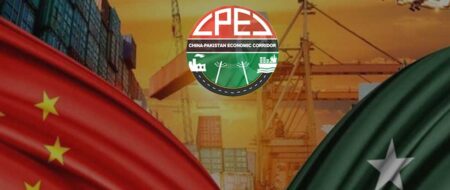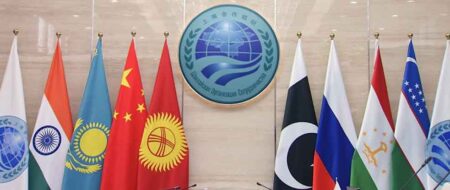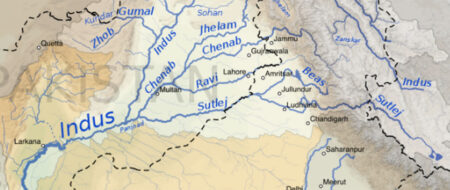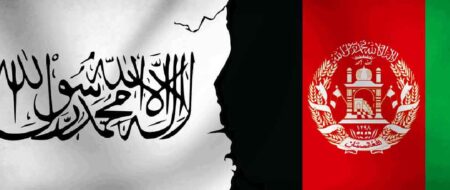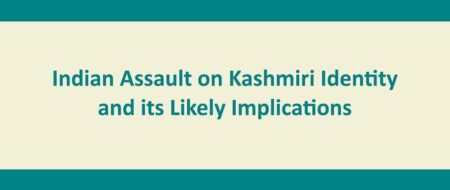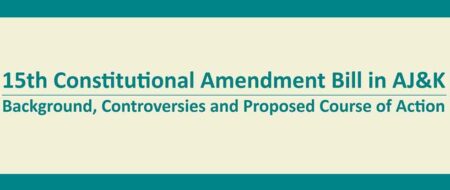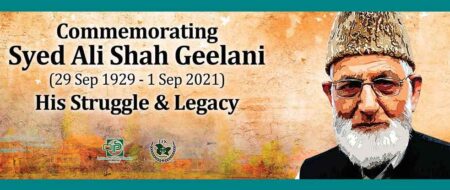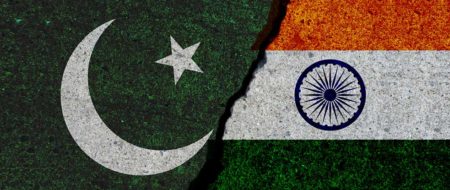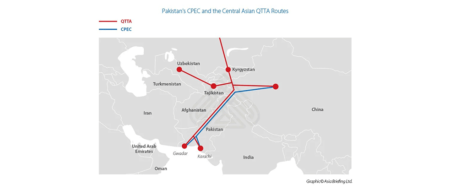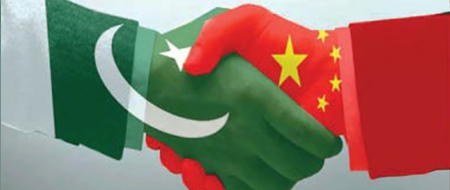Kashmiri Refugees: Facts, Issues and the Future Ahead
The last 16 years have witnessed continuous pouring of Kashimiris into different parts of Azad Kashmir. The suppression, gross human rights violations and relentless atrocities in Indian Held Kashmir (IHK)
Abstract
[The last 16 years have witnessed continuous pouring of Kashimiris into different parts of Azad Kashmir. The suppression, gross human rights violations and relentless atrocities in Indian Held Kashmir (IHK) leave little choice for them but to seek refuge across the line of control (LoC). Unprecedented number and wild attitude of the Indian occupational forces point to a vicious mission. The accomplishment seems to be heavily dependent on the successful outcome of either thorough subjugation or mass displacement of people. The latter seems to be working. These displaced from the war torn region, IHK, are faced with too many problems. Ironically they can neither expect to be treated as immigrants in the real sense of the term nor can they be taken as formal refugees. For all practical purposes, they are forced to find a new sanctuary in the same territory, though disputed and superficially demarcated, called Kashmir. This article, in this backdrop, uses the term refugee to describe the individuals and families who have moved across the line of control and now living in designated camps in Azad Kashmir.
Coming from an already deprived region, these refugees are going through tremendous hardship. The assistance provided to them merely suffices for their day to day survival. The international agencies such as UNHCR, known for taking care of displaced world over, are non-existent here. The other non governmental organizations are also not showing any interest in providing relief and sustainable assistance to improve their living standard or the quality of life. The piece discusses in detail the background of migration and the current state of affairs. It sheds light on legal and constitutional context and refugees’ right to return to their hometowns. The study also brings in to focus the plight of refugees and their crucial economical, social, educational and health related issues. It also discusses the government’s limitations and lack of seriousness towards addressing their problems whole heartedly. In the end, the paper offers plausible measures for dealing with their problems and points to a concrete yet long-term strategy for their rehabilitation as an imperative. Editor]
Introduction*
The human rights violations in Indian-held Jammu and Kashmir and the Kashmiris’ unprecedented struggle have been the subject of, literally, hundreds of books and thousands of articles; abundant information is available on every aspect. Surprisingly, however, the migration that began from the State in the 1990s and the difficulties faced by the refugees who arrived in Azad Jammu and Kashmir (AJK) have rarely been a topic of discussion. When the reasons for this are explored, it becomes apparent that the majority of refugees hail from a very backward segment of the Jammu and Kashmir population, most of them living below the poverty line. They neither found appropriate leadership, nor included many educated individuals. As a result, even after their arrival in Azad Kashmir, they were unable to emerge as a collective voice. The local leadership was also unable to pay due attention to their problems.
During the last 15 years (1990–2005), there has been migration from more or less all points along the 750-kilometer Line of Control (LoC). Although the extent of migration varies from area to area, the presence of refugee camps in most districts of Azad Kashmir bears testimony to the fact that suppression on the other side of the LoC has grown consistently.
Although the Government of Pakistan/AJK provides regular assistance to refugee families to meet their day-to-day needs, it is considerably insufficient for the dispossessed families. A few non-governmental organizations (NGOs) are also actively supporting the refugees but their roles are limited and their resources even more so.
International institutions, particularly the United Nations High Commission for Refugees (UNHCR), have provided considerable support for the rehabilitation of displaced families and individuals the world over; Kashmiri refugees have, however, remained deprived of their help. While the indifference of the international agencies is also an issue, lack of the Government interest in involving these agencies is equally regrettable. No efforts have been made to seek assistance from foreign governments and NGOs either.
Meanwhile, refugees continue to arrive and settle at camps, indicating that decisions need to be made to pave the way for long-term and concrete planning for their rehabilitation and proper settlement.
The objective of this paper is to study the current situation and the problems facing the refugees in order to facilitate an understanding of the issue in its proper perspective, and to suggest practical steps for the refugees’ relief and rehabilitation, keeping in view their cultural, religious and political background and aspirations.
Kashmiris’ Migration – A Brief Review
1947–48
Migration started from the State of Jammu and Kashmir during 1947–48 against the backdrop of the partition of British India and its aftermath. According to the Subcontinent’s Partition Agenda, agreed to by all the three concerned parties of the time, namely the Raj, All Indian National Congress and the All India Muslim League, this Muslim-majority State, spreading over 84,471 square miles, should have been made part of Pakistan. Unfortunately, however, the Congress leadership, British Viceroy Lord Louis Mountbatten (1900–1979) and the Hindu Maharaja of the State, Hari Singh (1895 –1961), flouted the Partition Plan as well as majority public opinion of the State, and maneuvered a forced annexation of Jammu and Kashmir with India.[1]
Hari Singh and the Congress leadership knew that the majority of the State’s populace was inclined to link its future with Pakistan; the Maharaja’s own preference, however, was that the State should remain independent or accede to India. Sensing the Maharaja’s intentions, the State’s Muslim majority started organizing resistance forces in the border districts, particularly in Poonch. In order to maintain his stranglehold, the Maharaja initiated systematic tyranny and torture against the resistance movement. His aim was to spread fear and panic, not only to deter people from resisting his forces, but also to compel them into an exodus to Pakistan so that the demographic hurdle of the State’s Muslim majority could be removed altogether.[2] The Maharaja invited the Rashtriya Sevak Singh (RSS), and the organized Sikh groups of extremists from East Punjab.[3] These circumstances compelled a large number of the local Muslims to migrate to Pakistan. According to the official figures, they currently make up around 1.5 million in Pakistan’s population alone.[4]
1965 and 1971
The next large-scale migration from Jammu and Kashmir took place during and after the 1965 war between India and Pakistan. During this war, the sympathies of the majority of the Kashmiris lay naturally with Pakistan. The inhabitants of the border districts of Poonch, Rajouri, Kapwara and Baramula provided considerable assistance to the Pakistani forces. As the war ended – yielding no conclusive results – the Indian army started a reign of terror against the Muslims in those areas. Numerous families and, in some cases, entire neighborhoods were wiped out. As a result, large-scale migration occurred from the border districts, especially from Rajori and Poonch. According to statistics of the AJK Government’s Department of Rehabilitation and Relief, around 10,000 families, including approximately 40,000 people, migrated during this period. The AJK Government resettled these refugees in Chhump (1,771 families) and Jhang (7,969 families).[5]
The third wave of migration took place during the 1971 India-Pakistan war. Since the main war occurred in East Pakistan, few families in Indian-held Kashmir were directly affected while the conflict took place. Afterwards, however, as the war had resulted in the loss of East Pakistan, India was bolder in its brutality towards Kashmiri Muslims. An estimated 10,000 people from border districts entered into Azad Kashmir and, on this occasion, were resettled locally.[6]
The Recent Arrivals (1990–Present)
The current wave of migration began in 1990 and continues even today. Since it is a current problem, its causes and nature are discussed here in some detail.
Kashmiri Resistance: During the State Elections of 1987, the administration of Indian-held Jammu and Kashmir displayed blatant deceit and arbitrariness, dashing all the hopes that the Kashmiri Muslim youth had entertained from the political process.
A number of regional developments also affected Kashmiris. They were deeply moved by the revolution in Iran (February 1979) and by the armed resistance against the Soviet Union in Afghanistan (1979-1990), which played an important role in turning their restlessness against Indian rule into a revolt and resistance. Important international changes also took place: the Berlin Wall fell, and many countries attained freedom following the Soviet Union’s collapse.
The changes had a special impact on Kashmiris, especially on the youth.[7] They motivated Kashmiris towards militancy. “Resistance”, “Jihad” and “Hatred of India” became popular slogans and resistance began taking shape in the form of various organizations. Some of these became the platforms from which the Kashmiri youth initiated an armed struggle.[8]
The Indian Strategy against the Uprising: Following their failure to quell the youth, the Indian forces changed their strategy and started committing atrocities against civilians, including women and children. This approach continues even today. In this situation, there is an obvious desire among Kashmiris to escape. The prevailing circumstances, however, make it difficult for them to leave their homes and migrate: the LoC is strictly monitored by the Indian forces; an extensive intelligence network exists, and miles of army bunkers make it almost impossible to pass without being noticed. Nevertheless, owing to the brutality of the Indian forces, migration to Azad Kashmir has continued.
The plight of the people in districts bordering the LoC – Baramula, Kapwara, Tehsil Uri, Karnah and Poonch – is especially pitiable. This is why a large portion of refugees hails from these areas. Indian forces commit more heinous atrocities in these areas because they think that the local public assists and guides the freedom fighters in crossing the LoC and bringing in arms and ammunition from Azad Kashmir. The occupation forces also feel that the locals conduct espionage for Pakistan.[9]
Another reason for the extraordinary oppression in the bordering districts is to force the people to leave and cross over into Azad Kashmir. This would serve two purposes for India: firstly, it would get rid of a significant segment of the local population that stands for freedom and sides with Pakistan; and secondly, it would contribute in facilitating the age-old Indian design to steadily expel the Muslims from the area until they are no longer a majority.[10]
As part of this special strategy for Kashmir’s border areas, the Indian Government introduced a “Pass Law” to control the people’s movement. Under the garb of this law, Indian Army officials break into the local people’s houses any time they please and, on the pretext of checking “Passes,” separate the menfolk from the women. Such occasions commonly entail sexual abuse, theft, torture and maltreatment by the officials. The Indian forces similarly use the “Six Month License” – commonly referred to as “special powers” – to arrest people for investigation without citing any reasons. Sometimes, when the six-month arrest period expires, an individual is released for a few minutes before being taken into custody for another six months.[11] Since the security forces have legal powers for this, even superior courts are unable to assist innocent civilians.[12]
The district of Kapwara is a special target of the security forces’ brutality. It is believed by the Indian agencies that it plays a key role in the militant movement, and has, therefore, been subjected to the worst kind of restrictions and punishments. Kapwara’s residents have to obtain a permit from the District Magistrate before they can travel to another area. A formal application is submitted for this purpose, stating the purpose of the visit and the date of return. The magistrate sends the application to the local Superintendent Police (SP) and permission is granted only if the SP has no objection. This process normally takes two weeks. Likewise, if a person wishes to visit Kapwara, the purpose and duration of the visit needs to be explained to the army, police and other sensitive agencies of the held State.[13]
These are some of the ways in which Indian forces have made life unlivable in the areas bordering LoC. Given no respite, the hapless people started secretly migrating from the area into Azad Kashmir.[14]
The Refugees’ views: It was natural for the oppressed people to have sympathies with the freedom fighters, who, in fact, represented for most of them the only glimmer of hope.[15] They paid a heavy price for their support.
A number of refugees who were interviewed narrated horrifying tales of the atrocities they faced. Their homes were searched night and day and the night curfew was clamped immediately after sunset.[16] Often, soldiers arrived at midnight looking for the freedom fighters and when the refugees denied having any knowledge of their whereabouts, they were beaten and tortured. The soldiers forced the local people into hard labor. They made them collect firewood and carry it to their posts high up in the mountains. They were used to transport army goods that arrived from Srinagar and Jammu to military camps.[17] When the weary men returned to their homes in the evening, they found soldiers waiting for them to escort them to check-posts, where they spent the night in the lock-up. In the meantime, their womenfolk remained at the mercy of Indian security forces.[18]
Sometimes women were raped in front of their family members.[19] Life was made impossible for the family and relatives of any person believed to be participating in the freedom struggle. The houses of these so-called “insurgents’” were torched so that their families were left without a roof over their heads.[20]
Steady streams of reports of rape and torture by Indian forces in neighboring villages compelled many people to shift their families to safety in AJK.[21] In Muzafarabad’s Kamsar Camp, the head of a family reported that his five sons were tortured almost daily by Indian forces. They migrated to escape this situation. When asked why they did not move to Srinagar or Jammu, the general response was that the treatment of Kashmiris by the Indian forces in those areas was more or less the same and they had, therefore, no alternative but to migrate to Azad Kashmir.[22]
Whenever the Indian security forces discovered any link whatsoever of households in the bordering areas with freedom fighters, they responded with pure brutality, and the families had no option but to run for their lives and somehow make it to AJK. At times, they crossed into Azad Kashmir even as they sensed danger from Border Security Force (BSF).
Some refugees had also migrated because they had feared that Pakistan might attack to liberate Kashmir and, unless they moved to a safer location, they would get killed in the crossfire or tortured by the Indian forces.[23] There were some who had migrated thinking that Kashmir would be liberated within a few weeks and they would then return to their homeland. Fifteen years later, they find themselves clueless about when they will be in a position to return.[24]
The Constitutional and Legal Position of Refugees
Although refugees who arrived during and after 1947 have formally settled in different parts of Azad Kashmir and Pakistan and are actively involved in the local social and civil life, the question of their constitutional and legal status is not yet settled. In order to understand this issue, it is helpful to consider the relevant parts of UN resolutions on Kashmir and the existing laws in Indian-held Jammu and Kashmir.
UN Resolutions
The essence of UN Security Council resolutions is the reaffirmation of the Kashmiris’ right of self-determination. The basic agreement reached for a permanent solution was that the people of Kashmir should decide through a plebiscite whether they wished to join India or Pakistan. Since a significantly large portion of Kashmiri people had to leave their homeland and take refuge in Pakistan, the initial Resolution passed on April 21, 1948 clearly stated that:
…The Government of India should ensure that the Government of the State releases all political prisoners and takes all possible steps so that:
(a) all citizens of the State who have left it on account of disturbances are invited and are free to return to their homes and to exercise their rights as such citizens;…[25]
The Resolution of January 5, 1949 also spoke about ensuring the return of the refugees. It stated:
“…All citizens of the State who have left it on account of the disturbances will be invited and be free to return and to exercise all their rights as such citizens. For the purpose of facilitating repatriation there shall be appointed two Commissions, one composed of nominees of India and the other of nominees of Pakistan…”[26]
Responding to the Indian allegations at the UN Security Council in January 1948 that Pakistan was committing interference in Jammu and Kashmir, Pakistan’s Foreign Minister, Sir Mohammad Zafarullah Khan (1893–1958), stated Pakistan’s position and demanded:
“…The refugees who had left for Pakistan because of the unbearable atrocities of the Dogra and Indian army should be allowed to return to the State…”[27]
In fact, in both UN Security Council Resolutions, the provisions that gave the refugees the right to return to their homeland and to play a role in deciding its future were based on this demand from Pakistan. These Resolutions establish that all refugees who have left Indian-held Jammu and Kashmir for Azad Kashmir or Pakistan since 1947 are in fact citizens of the Indian-held State and have the right to exercise their option in the UN-sponsored plebiscite.
The Right to Return: The State Laws
In 1980, the Indian Government pressured the State Government of Jammu and Kashmir to accord state citizenship to the displaced persons from Pakistan.[28] The Chief Minister of Jammu and Kashmir, Sheikh Mohammad Abdullah (1905–1982), refused to accept this demand, stating that conferment of State citizenship was the prerogative of the State Government, not Delhi. Despite his stand, great pressure remained on Sheikh Abdullah’s administration. In response, Sheikh Abdullah raised a question: If the newcomers were state citizens, what of the State citizens who had migrated during or after 1947 to Pakistan or another country, or who were settled in ‘other part’ of the State, Azad Jammu and Kashmir? He took the position of according these State subjects the right to return. Against this backdrop, a “Re-establishment Bill” was presented in the State Assembly on March 8, 1980, and was passed in April 1982, after Farooq Abdullah came to power, as “The Jammu and Kashmir Grant of Permit of Re-settlement in the State Act 1982.”[29] However, the Indian President at the time, Giani Zail Singh (1916–1994), referred the Act to the Supreme Court of India for its opinion on whether it was in conflict with the constitution.[30]
Some 19 years later, on November 6, 2001, the Supreme Court of India returned the Bill without any decision, declaring that in this manner, the Bill that had been passed by the State Assembly had automatically become law. The Court respected the fact that the Bill had become an Act since 1982.[31] But on February 1, 2002, after hearing a writ petition lodged by the Jammu and Kashmir Panther Party, the Supreme Court of India issued an injunction against implementation of the Act until further orders. To all appearances, the issue had once again been consigned to cold storage.[32]
Notwithstanding these events, even today, the general view among Kashmiri refugees is that they will return to their ancestral homes after the Kashmir issue has been resolved. Under another law passed in Indian-held Jammu and Kashmir – the Evacuees Act of 1949 – refugees’ assets have been taken under protection and are only allotted on lease (although in some cases the duration of lease is 40, 50 or 90 years). The Government does not give complete ownership to anyone so that the assets can be returned to the real owners whenever they return.[33]
Status, Organization and Living Arrangements in Azad Kashmir
Individuals and families migrating from Indian-held Kashmir have been officially accommodated by the Government of Azad Kashmir at camps in various areas. Once they are registered, the refugees are also provided regular assistance for monthly expenses. There are now 15 such camps, housing 24,574 refugees.[34]
The initial period of migration, from 1990 to 1994, was one of great discomfort for refugees. During these years, no formal camps existed and the Government housed them at scattered official or rented locations. For accommodation, they were given tents, which did not have enough provisions for privacy or for protection against the weather. In the rainy season, their homes stood on pools of water and the few goods they had were ruined. Diseases spread fast. The personal and marital lives of many families were badly affected.[35]
In 1994, it was agreed between the Azad Kashmir Department of Rehabilitation and the Government of Pakistan that the tented settlements would be replaced with proper huts. The administration provided iron sheets, cheap timber and land. The rest of the work was done by refugees on a self-help basis, although, on a few occasions, some NGOs also provided assistance in construction. In this manner, each family managed to construct some rooms, temporary or permanent, for itself.[36]
A number of political organizations participated in the provision of health and educational facilities and construction of mosques at the camps, in particular, the Jamaat-e-Islami, which was directly involved. Individuals affiliated with the organization also demonstrated their interest independently. Schools, mosques and health units were established. At present, not a single family residing in a camp lives in a tent. Moreover, in January 2002, the AJK Government established a special camp for refugees that is equipped with basic facilities and located 15 kilometers outside Muzaffarabad at Busnara. The Rehabilitation Department allotted each family a 1,200-square-feet (30 x 40 feet) plot, and the required construction blocks. Electricity and road facilities already existed here.[37]
Despite these measures, the area allocated for camps is falling short owing to population growth. In future, more space will be needed even for existing refugee settlements.[38]
While most of the refugees live in camps, a considerable number now reside in rented accommodation in cities like Muzaffarabad and Rawalpindi. They have not settled in the camps for various reasons, such as marriage with local families, mostly among their own relatives who had migrated to AJK earlier. The number of such families stands at present at approximately 720.[39]
It is significant to note that the two groups of refugees – camp residents and city residents – have different perspectives on their problems and future. Before discussing their problems, however, let us take a brief look at the administrative setup for the look-after of refugees.
The Government of AJK has been striving to resolve the refugees’ problems since its own inception in 1947. Until 1974, refugees’ care was the responsibility of the Divisional Commissioner, delegated to him as an additional charge. In 1974, a separate office was set up for the Department. However, the Commissioner’s additional charge was delegated to a senior official of the Finance Department. Finally, when the current phase of the Freedom Movement began in held Kashmir in 1988–89 and an influx of refugees was anticipated, a full-time Rehabilitation Commissioner was appointed.[40]
Following an established procedure, the Department of Rehabilitation and Relief registers refugees upon their arrival and later issues them an “Refugee Card.” On the basis of this card, the Government starts providing them a subsistence allowance, admission in educational institutions and medical aid.[41] The Government of AJK currently gives the Department a monthly budget of Rs. 30 million to be spent on subsistence allowances and other refugee matters.[42]


